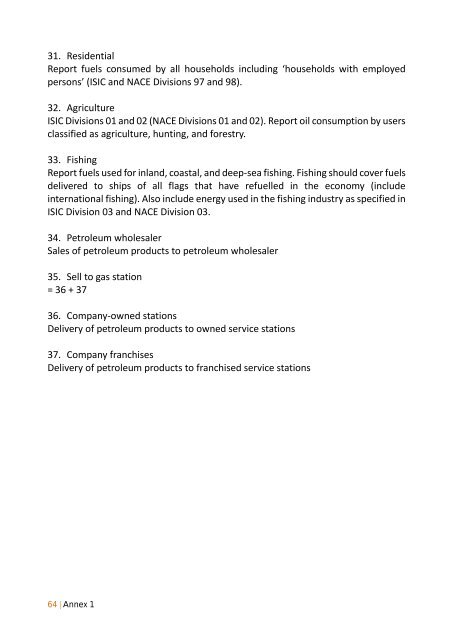RPR_FY2015_08
You also want an ePaper? Increase the reach of your titles
YUMPU automatically turns print PDFs into web optimized ePapers that Google loves.
150<br />
140<br />
Figure 3.13. Total Primary Energy Supply and Energy Intensity<br />
142<br />
141<br />
130<br />
120<br />
110<br />
100<br />
131<br />
1<strong>08</strong><br />
100<br />
GDP<br />
POP<br />
TPES<br />
90<br />
80<br />
GDP = gross domestic product, POP = population.<br />
Source: ERIA, calculated from the Cambodia Energy Balance Table 2010–2015.<br />
TPES is measured as the energy intensity multiplied by GDP:<br />
TPES = TPES/GDP × GDP<br />
The intensity effect is estimated as:<br />
(TPES/GDP) × GDP<br />
The production effect is estimated as:<br />
(TPES/GDP) × GDP<br />
Thus, the impact of the effects to TPES can be estimated as:<br />
TPES =(TPES/GDP) × GDP + Intensity Effect<br />
(TPES/GDP) × GDP + Production Effect<br />
Crossover Term<br />
Crossover term is just a term for the difference between the impacts of both effects<br />
with the changes in TPES.<br />
3.5.2 Energy and CO2 emissions<br />
CO2 emissions from fuel combustion can be calculated using the reference<br />
and the sectoral approaches as suggested in the 2006 Intergovernmental Panel on<br />
Climate Change (IPCC) Guidelines for National Greenhouse Gas Inventories. The<br />
reference approach provides simple estimates for CO2 emissions from all fuel<br />
combustion and some fugitive emissions.<br />
The sectoral approach provides estimates of CO2 emissions from the main<br />
50 | Chapter 3 • Analysis of Energy Demand Supply Situation



